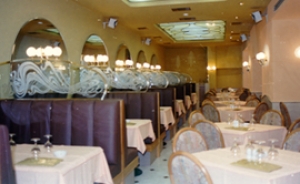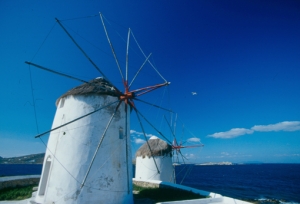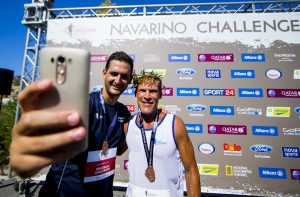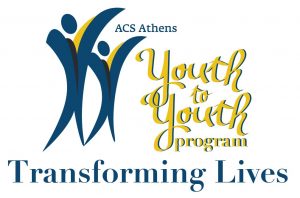EU Commissioner for Humanitarian Aid and Crisis Management, Christos Stylianides, visits ACS Athens’ Youth-to-Youth program for refugee minors
Having the experience of transforming lives through the Youth-to-Youth Programs, ACS Athens invites other educational institutions to follow its example.
Mr. Stylianides: “I wanted to come here to see this extraordinary project.”
November 3, 2018 - Halandri, Athens Greece: On Saturday, November 3rd, 2018, Christos Stylianides, the European Commissioner for Humanitarian Aid and Crisis Management, visited the ACS Athens campus to observe the classrooms of the Youth-to-Youth (Y2Y) Programs and met with the unaccompanied refugee minors.
Taking an active stand during the beginning of the refugee crisis in 2016, ACS Athens initiated the Youth-to-Youth Educational and Social Integration Programs which now, entail: the Part-Time and Full-Time Youth to Youth (Y2Y) Programs and the Part-Time Business-to-Youth (B2Y) program designed in collaboration with the HOME Project Organization for the children residing in their shelters. The specially designed curriculum, the student-to-student partnership model, the differentiated instructional strategies, the athletic and social activities have provided thus far, meaningful educational and social integration experiences to approximately 96 students. The framework ensures social integration through youth-to-youth teaching, public events and inclusion in the social life of the school. The Part-time programs run by volunteers for the first two years while this academic year the programs are funded by sponsors via the HOME Project Organization.
The November 3rd, 2018, marks the beginning of the 3rd academic year of the Part-time Youth to Youth and Business to Youth Programs. ACS Athens is pleased to announce that this year both programs will be funded by the HOME Project Organization.
Commissioner Stylianides had the opportunity to visit the classrooms with the newcomers and experience first-hand how their orientation day was carried out. The Commissioner was briefed on the details of this initiative and its impact to the lives of the young refugees by the ACS Athens President, Dr. Stefanos Gialamas, the Counselor for Political Affairs of the Embassy of the United States of America in Athens, Ms. Amy C. Carlon, the Executive Director of THE HOME Project Organization, Ms. Sofia Kouvelaki, and by the Director of the Youth-to-Youth Educational and Social Integration Programs, Ms. Julia Tokatlidou. Furthermore, Mr. Stylianides had a conversation with the ACS Athens faculty, student volunteers and Y2Y students from the HOME Project Organization.
Mr. Stylianides explained the reason for his visit: “I wanted to come here to see this extraordinary project.” In relation to the importance of education the Commissioner explained: “We have a new policy because of these education emergencies. Our top priority is to prevent children from staying out of school more than 3 months.”
Regarding the next steps needed he highlighted: “The other big challenge is to find ways to connect this project to the national curriculum. Above all is to give hope and prospect. But you have to materialize this process in order to give hope and prospect. “
The President of ACS Athens, Dr. Stefanos Gialamas highlighted the importance of synergies for the realization of such initiatives: “This is the ideal situation for a four-way partnership with our school: It’s THE HOME Project which provides family. Then, the Shapiro foundation has provided the funds for full time scholarships, and another key element is the support of the U.S. Embassy. Also, from today, the IKEA foundation is providing the funds for the part time scholarships.”
The executive director of THE HOME Project explained the significance of the Y2Y program: “We are extremely grateful to ACS Athens because it has opened its arms to us at the very beginning of our operations. We are a newly born, nonprofit organization that provides support, protection, and social integration to unaccompanied minors. Dr. Gialamas and Ms. Tokatlidou, with their innovative and humanistic approach to education, opened their arms to the children we care for; making a huge difference in Greek society; breaking all social and economic barriers and really providing an example to the world of how academic institutions can really play a difference and transform lives. So, we’re very grateful. “
As a representative from the American Embassy, Amy C. Carlon addressing the unaccompanied minor refugees students congratulated them on their efforts to adjust in a new place and culture and stated: “As you know, thereare a lot of American embassy children here in the school. This is really an important experience for them as well. One of the basic tenets of the school is Ethos, and this indeed shows how the school does that: it tries to build humanitarian citizens. And I’m so glad that all of you could be a part of that. Congratulations and do your best!”
The Director of Youth to Youth Educational and Social Integration Programs and Academy Vice Principal, Director, Ms. Julia Tokatlidou commented on the progress of the students: “You can see the growth of the students who have been with us through the part-time Y2Y program. It’s tremendous. They came to the full time program and adjusted fully with no problem at all. Because the model is so inclusive and holistic, they developed skills right away and so fast. And we are very confident that we are going to have tremendous results for them.”
Ms. Julia Tokatlidou also invited other educational institutions to follow this example: “This is a program developed from the heart of ACS Athens students and caring professionals of high caliber from ACS Athens and THE HOME Project organization. It reflects our goal to serve humanity and to educate students holistically. It has benefited not only the lives of the recipients, the refugee minors, but more so the lives of the givers, our ACS Athens students. We wish that all private international institutions around the world can follow this paradigm of developing, caring and integrating refugee minors. Together, we can offer equal educational opportunities for all children”.
About Youth-to-Youth Educational and Social Integration Programs
The Youth-to-Youth Programs, designed and implemented by ACS Athens faculty and students in collaboration with the HOME Project organization, provide a valuable educational and social integration framework focused on unaccompanied refugee minors in Greece living at THE HOME Project shelters. With the help of the HOME Project four of our part-time Business to Youth students (18+) found full-time positions in the Greek Tourism industry in the summer of 2018.
The Part-Time Y2Y and the B2Y Career programs deliver a need-based curriculum designed, by ACS Athens faculty, around the academic skill level and goals of each individual student. The curriculum includes academic learning (English and Greek languages, art, computer), skill development (professional etiquette, oral presentation), wellness (athletics, sports, drama, dance), and social integration (student-to-student teaching, public events, celebrations, social media). The development of relevant skills for work as well as social learning goals of collaboration, discipline, focus, resiliency, trust, a renewed hope for relationships, and tolerance for diversity of perspectives are the essential learning aims of the curriculum and the teaching methodology. The Part-Time B2Y program expands to 10- Saturdays in order to include a career day, designed in collaboration with local businesses aiming to familiarize students with the job requirements of different organizations.
The benefits of the program also extent to ACS Athens student volunteers, who are developed as learners, caring individuals, and responsible global citizens via the teaching assistant role they undertake through the program. Further, the positive feedback from student volunteers and parents has made this program a sustainable community program and a lifelong educational experience for all involved.
The HOME Project Organization and the professionals involved in the care of the unaccompanied minors is an important factor in the development of the program. In addition to their continuous presence every Saturday, there exists full alignment of the programs’ educational and social goals with the processes and practices as well with the socio-emotional support mechanisms in place in each of the homes run by the HOME Project. The continuous communication between ACS Athens and HOME Project professionals regarding the wellbeing and growth of the
students is vital in ensuring the success of the intended outcomes of the programs.











